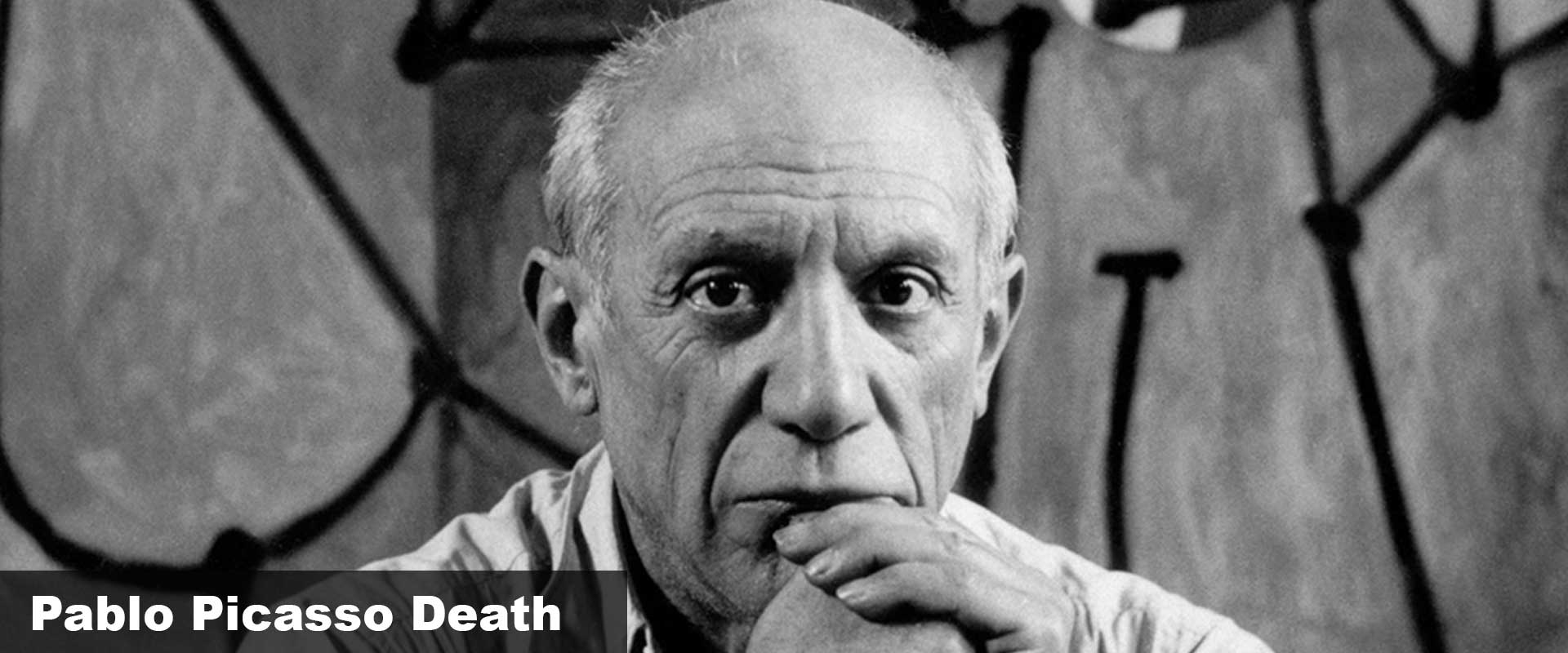The death of Pablo Picasso on April 8, 1973, marked the end of one of the most extraordinary artistic journeys in history. At the age of 91, Picasso left behind more than 20,000 works spanning painting, sculpture, ceramics, and printmaking. His passing was mourned worldwide, but it also became the beginning of his transformation from a living legend into an eternal symbol of creativity.
Even decades later, Picasso’s influence remains unrivaled. His legacy continues to shape art, culture, and even political thought, proving that death could not silence the world’s most influential artist.
The Day Picasso Died
Picasso passed away at his villa, Notre-Dame-de-Vie in Mougins, France, from heart failure after an evening spent dining with friends and his wife, Jacqueline Roque. His reported final words carried humor and humanity: “Drink to me, drink to my health, you know I can’t drink any more.”
His burial took place at the Château of Vauvenargues, a property near Aix-en-Provence overlooking Mont Sainte-Victoire, a mountain painted by Paul Cézanne, one of Picasso’s greatest inspirations.
As described in When Did Pablo Picasso Die? Exploring His Final Days, even in his last years Picasso continued to paint with urgency and freedom, leaving behind a profound late body of work.
Immediate Reaction to Picasso’s Death
The world’s response to Picasso’s death was immediate and global.
- Artists and critics mourned the loss of modernism’s central figure. Many noted that Picasso’s constant reinvention defined 20th-century art.
- Museums and galleries organized memorial exhibitions within weeks. The Musée Picasso in Paris and Museu Picasso in Barcelona became focal points for remembrance.
- Headlines across Europe and America declared his passing as the “end of an era.”
As explored in Picasso Death: The World Reacts to the Loss of a Legend, his death was not just personal loss but a cultural event.
Picasso’s Final Works
Even into his 90s, Picasso worked relentlessly. His late works reveal:
- Bold reinterpretations of Old Masters like Velázquez and Rembrandt.
- Expressive portraits that confronted aging and mortality.
- A vibrant, almost youthful energy in his use of color and line.
These works, often misunderstood at the time, are now celebrated as powerful statements of resilience and creativity.
Key Facts About Picasso’s Death
- Date: April 8, 1973
- Place: Mougins, France
- Age: 91
- Cause: Heart failure
- Burial: Château of Vauvenargues, overlooking Cézanne’s Mont Sainte-Victoire
- Legacy: Over 20,000 works spanning multiple mediums
Comparison: Picasso’s Death vs Other Artistic Figures
| Artist | Year of Death | Age | Recognition at Time of Death | Legacy Strength |
|---|---|---|---|---|
| Pablo Picasso | 1973 | 91 | Global mourning, immediate tributes | Unmatched influence on modern art |
| Henri Matisse | 1954 | 84 | Revered, though less dominant globally | Key modernist innovator |
| Salvador Dalí | 1989 | 84 | Eccentric celebrity, Surrealist icon | Strong, though narrower focus |
| Vincent van Gogh | 1890 | 37 | Largely unknown at the time | Immense, but posthumous recognition |
This table shows that unlike many artists, Picasso enjoyed global fame during his lifetime, making his death a shared moment of cultural grief.
The Legacy After Picasso’s Death
In the Art Market
Picasso’s death triggered a surge in the value of his works. Major auction houses saw record sales, cementing his dominance in the global art market.
In Museums and Culture
- Guernica became an enduring anti-war icon, now housed at Madrid’s Museo Reina Sofía.
- The Musée Picasso in Paris and Museu Picasso in Barcelona preserve thousands of his works, drawing millions of visitors.
- His legacy inspired exhibitions worldwide, reinforcing his status as the most influential modern artist.
In Influence
Artists across movements—Abstract Expressionists, Surrealists, and even contemporary street artists—continue to cite Picasso as a defining influence.
As noted in Pablo Picasso Art: How He Shaped the 20th Century, Picasso’s legacy is not confined to a single movement; it spans the entire framework of modern creativity.
Why Picasso’s Legacy Endures After Death
- Produced more works than nearly any artist in history
- Constantly reinvented his style across decades
- Blended personal emotion with political engagement (Guernica, Weeping Woman)
- Inspired new generations of artists in every corner of the globe
- Remains a cultural reference point beyond art—in literature, music, and film
For admirers today, collections such as Pablo Picasso Wall Art Prints allow his genius to live in homes as well as museums.
Conclusion
The death of Pablo Picasso in 1973 marked the passing of a man who had redefined what art could be. Yet his legacy did not die with him. His works—spanning periods from Blue to Cubism to political protest—continue to inspire awe and reflection.
Picasso’s genius lay not only in his skill but in his refusal to stop experimenting. That spirit continues to shape art, ensuring that his influence remains alive long after his final day. Truly, the world’s most influential artist did not simply live in the 20th century—he defined it.
FAQs on Pablo Picasso’s Death and Legacy
When did Pablo Picasso die?
He died on April 8, 1973, in Mougins, France, at age 91.
What caused Picasso’s death?
He died of heart failure, after an evening spent with friends and his wife Jacqueline.
Where is Picasso buried?
He is buried at the Château of Vauvenargues near Aix-en-Provence, overlooking Cézanne’s Mont Sainte-Victoire.
How did the world react to Picasso’s death?
The art world and global community mourned deeply, with memorials, exhibitions, and tributes organized almost immediately.
What is Picasso’s legacy today?
He is remembered as the most influential artist of the modern era, whose works continue to dominate museums, auctions, and cultural conversations.





